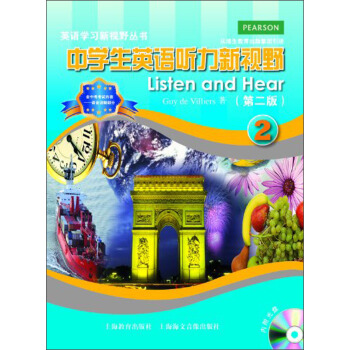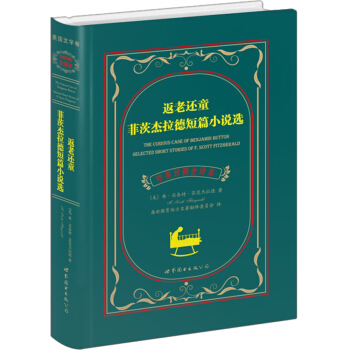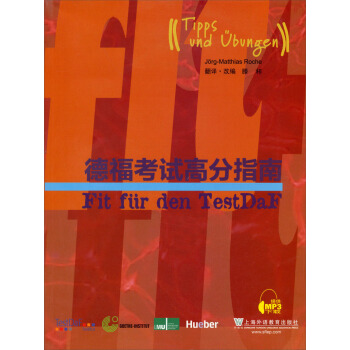![6500词床头灯英语学习读本:不可不知的德国历史故事(英汉对照) [Historical Stories of Germany]](https://pic.windowsfront.com/10051488/c9286e51-e0b4-4001-91b9-1976b0973247.jpg)

具体描述
内容简介
公元前,在莱茵河与易北河生活着20多个部落,称为日尔曼人。罗马帝国经过多年征战,于公元前58年将疆域拓展到莱茵河。当时的日耳曼人,在赫曼(Hermann)的领导下团结一致,于条顿堡森林(Teutoburg Forest)大败罗马军队,历史遂以条顿(Teuton)称呼这个民族。公元2-3世纪,日尔曼部族从散居状态逐渐形成了撤克逊、法兰克、巴伐利亚、图林根、黑森等较稳定的部落。3世纪时,查理曼(Charlemagne)帝国几乎统一了日耳曼诸族。
814年查理大帝去世,形成了东西两个王国,其分界线大致与德语和法语之间的语言界限相当。讲法语的西法兰克王国后来演变成今天的法国,而讲德语的东法兰克王国的居民开始用德意志来称呼自己的语言和民族。
919年,撒克逊公爵亨利一世即位,正式创立德意志早期封建国家,这是严格意义上的德国历史的开始。这时的王国大致包括今日的荷兰、德国、瑞士、奥地利。14世纪中期,德国出现封建割据,分裂成几百个邦国。
15、16世纪,意大利掀起文艺复兴运动,其在德国的影响就是1517年由马丁·路德领导的宗教改革,这场宗教改革使德国分裂了天主教。新旧教派之间的矛盾冲突引发了1618-1648年的战争,德意志复又处于四分五裂的状态。
侣世纪初,在腓特烈大帝(Friedrich the Great)的统治下,日耳曼诸邦中的普鲁士王国(Prussia)兴起。1870年,普法战争爆发,普鲁士战胜法国。侣71年,普鲁士国王威廉一世在凡尔赛宫接受加冕,成为德意志皇帝。从此,德国作为一个统一的近代民族国家在欧洲崛起。
《不可不知的德国历史故事(英汉对照)》共讲述了25个故事,内容跨越了罗马帝国时期一直到1 9世纪末德意志帝国统一的历史阶段,故事涉及到德国历史上的最重大事件和最重要人物。
这些篇章虽属于历史故事,读之却像《三国演义》,人物栩栩如生,描写生动形象,情节曲折引人入胜,令人读之不忍释卷。故事的主人公除了毫无人性的暴君以及阴险诡诈的小人,许多至今仍值得人们怀念与敬仰。他们之中有的犹如诸葛亮般足智多谋,以少胜多,以弱胜强;有的犹如秦皇汉武壮志凌云,雄视天下;有的坚忍不拔百折不挠,为了信仰舍生取义;有的为了国家独立,大义凛然,前仆后继,视死如归。
这些故事大致按照德国历史的时间顺序记述,每-个故事都是一个历史片断。把这些故事串成一条线,虽然还不能构成完整的德国历史,但管窥蠡测可见这一千年间德国人文、风俗、宗教信仰以及政治、经济、军事等的变迁与发展的轨迹。
内页插图
目录
德国英雄赫尔曼阿尔伯因和约瑟蒙德
格雷蒙德的事业
维特金德,撤克逊爱国者
哈托主教的人生之旅
莱茵河的鼠塔
恩斯特公爵的不幸经历
奥托二世之治一
亨利四世
弗雷德里克·巴巴罗萨大帝与米兰
弗雷德里克二世的十字军
威廉·泰尔与瑞士爱国者
黑死病和鞭身者
一个疯狂的皇帝
盲武士杰士卡
路德与特赦
农夫与再洗礼派教徒
华伦斯坦的命运
两个伟大战士的结局
青年时代的弗雷德里克大帝
伏尔泰与弗雷德里克大帝
七年战争的壮丽场面
蒂罗尔的爱国者
新旧帝国
精彩书摘
hastily made camp. But it was impossible for them to remain there. Their provisions were lost or exhausted, thousands of enemies sur- rounded them, and their only hope lay in immediate and rapid flight.Sun rise came. The soldiers had recovered somewhat from the fa- tigue of the day before. Setting fire to what baggage remained in their hands, they began a retreat fighting as they went, for the pitiless ene- my disputed every step. The first part of their route lay through an open plain, where they marched in orderly ranks. But there were mountains still to pass, and they quickly found themselves in a wood- ed and pathless valley, in whose rugged depths defense was almost impossible. Here they fell in thousands before the weapons of their enemies. It was but a small body of survivors that at length escaped from that deadly pass and threw up camp for the night in a more open spot.
With the dawn of the next day they resumed their progress, and were at no great distance from their stronghold of Aliso when they found their progress arrested by fresh tribes, who attacked them with great violence. On they struggled, fighting, dying, marking every step of the route with their dead. Varus, now reduced to despair, and see- ing only slaughter or captivity before him, threw himself on his sword, and died in the midst of those whom his blind confidence had led to destruction.
No more terrible disaster had ever struck the Roman army. Many prisoners had been taken, among them certain judges and lawyers, who were the chief objects of Hermanns hate, and whom he devoted to a painful death. He then offered sacrifices to the gods, to whom he gave the captured goods, the dead, and the leading prisoners, numbers of them being killed on the altars of his gods. These religious cere- monies completed,prisoners who still remained were distributed a- mong the tribes as slaves. The effort of Varus to force Roman customs and laws upon the Germans had led to a fearful retribution.
When the news of this dreadful event reached Rome, that city was filled with grief and fear. The heart of Augustus, now an old man, was stricken with dismay at the slaughter of the best soldiers of the empire. With neglected dress and person he wandered about the rooms and halls of the palace, his piteous appeal, "Varus, give me back my soldiers!" showing how deeply the disaster had pierced his soul.
Meanwhile, the Germans, satisfied, as it seemed, with expelling the Romans from their country, destroyed their forts and military roads, and settled back into peace.
For six years peace continued. Augustus died, and Tiberius be- came emperor of Rome. Then, in the year 14 A.D., an effort was made to retake Germany, an army commanded by the son of Drusus, known to history under the name of Germanicus, attacking the Marsi, when intoxicated and unarmed after a religious feast. Great numbers of the defenseless tribesmen were killed, but the other tribes sprung to arms and drove the invader back across the Rhine.
In the next year Hermann was again brought into the conflict. Segestus had robbed him of his wife, the beautiful patriot Thusnelda, who up until then had been his right hand in council in his plans a- gainst the Roman enemy. Hermann besieged Segestus to regain pos- session of his wife, and pressed the traitor so closely that he sent his son Sigismund to Germanicus, who was again on the German side of the Rhine, imploring aid. The Roman leader took instant advantage of this promising opportunity. He advanced and forced Hermann to raise the siege, and himself took possession of Thusnelda, who was destined soon afterwards to be made the leading feature in a Roman parade. Segestus was rewarded for his treason, and was given lands in Gaul, his life being not safe among the people he had betrayed. As for the daughter whom he had yielded to Roman hands, her fate troubled little his base soul.
Thusnelda is still a popular character in German legend, there being various stories concerning her. One of these relates that, when she lay concealed in the old fort of Schellenpyrmont, she was warned by the cries of a faithful bird of the coming of the Romans, who were seeking quietly to approach her hiding place.
The loss of his beloved wife roused Hermanns heroic spirit, and spread anger among the Germans, who highly esteemed the noble- hearted woman. They rose hastily in arms, and Hermann was soon at the head of a large army, prepared to defend his country against the attacking hosts of the Romans. But as the latter proved too strong to face in the open field, the Germans retreated with their families and property, the country left by them being laid waste by the advancing armies.
Germanicus soon reached the scene of the late slaughter, and caused the bones of the soldiers of Varus to be buried. But in doing this he was obliged to enter the mountain passes in which the former army had met its fate. Hermann and his men watched the Romans in- tently from forest and hilltop. When they had fairly entered the narrow valleys, the adroit chief appeared before them at the head of a small troop, which retreated as if in fear, drawing them onward until the whole army had entered the pass.
Then the fatal signal was given, and the revengeful Gernmas fell upon the armies of Germanicus as they had done upon those of Varus, cutting them down in great numbers.
前言/序言
用户评价
这本书的叙事风格简直像一位技艺高超的说书人,他能将原本可能枯燥乏味的史实,讲述得跌宕起伏、引人入胜。我特别欣赏作者处理历史事件的视角——不是那种冷冰冰的年代罗列,而是充满了对历史人物内心世界的细腻刻画。读着那些帝王将相、科学家和平民百姓的故事,我仿佛能感受到他们面对抉择时的挣扎与勇气,他们的荣耀与遗憾。这种文学化的处理,使得原本遥远的历史瞬间变得鲜活可感,我常常会因为某个角色的命运而深思良久。它成功地将冰冷的历史知识,转化为有温度、有情感的故事,让人在不知不觉中,对这个民族的文化基因有了更深层次的共鸣。
评分这本书的装帧设计相当考究,厚实的封面给人一种沉甸甸的历史厚重感,摸上去质感非常棒,拿在手里翻阅时,那种油墨的清香和纸张的触感,让人瞬间感觉像是回到了那个风云变幻的年代。排版布局也十分用心,字体选择清晰易读,行距和字距拿捏得恰到好处,即便是长时间阅读也不会感到眼睛疲劳。最让我惊喜的是,插图和地图的质量极高,那些描绘历史场景的版画和彩色复原图,不仅是视觉上的享受,更是帮助理解复杂历史脉络的绝佳辅助工具。通常这类读物在插图方面会比较敷衍,但这本书显然在这方面投入了大量精力,让阅读体验从单纯的文字吸收,升华为一种沉浸式的历史探索之旅。每次翻开它,都能感受到出版方对读者的尊重,这种对细节的极致追求,是很多同类出版物所望尘莫及的。
评分从语言学习的角度来看,这本书简直是为我这种中级英语学习者量身定制的宝典。我发现它在词汇的选择上非常巧妙,既保留了历史叙述所需的严谨性和准确性,又避免了过多晦涩难懂的古旧词汇,让我在阅读原版故事时能够保持流畅感,而不是频繁地停下来查字典。更重要的是,它似乎在设计阅读节奏上花了心思,那些长难句的结构解析得非常清晰,即便初次接触复杂的从句结构,也能通过上下文语境,逐步摸索出作者的行文逻辑。对我来说,这不仅仅是背单词、记语法,而是在真实的历史情境中进行“活学活用”,这种代入感极大地提高了我的学习效率和兴趣。我已经开始将其中一些经典句型应用到自己的写作练习中,效果立竿见影。
评分对于一个对欧洲文明发展脉络感兴趣的读者而言,这本书提供了一个非常扎实的基础框架。它不是那种专注于某一个特定时期的微观研究,而是以一种宏大而又不失细节的笔触,勾勒出了从早期部落到近现代社会演变的关键节点。通过这些故事,我得以串联起欧洲大陆上诸多重大历史事件之间的相互影响和逻辑关系,例如启蒙运动对社会结构的影响,或者工业革命的社会代价。它成功地搭建起了一套知识体系,让我能够更清晰地定位和理解其他相关领域(如哲学、艺术)的发展,为我进行更深入的扩展阅读指明了方向,实乃一本极具启发性和实用价值的“历史引路书”。
评分不得不提的是,这本书的翻译质量,简直是教科书级别的典范。我特意对比了几个关键的历史名词和术语的英汉对照,发现译者不仅准确传达了原文的语义,更重要的是,他们成功地在两种语言的思维方式之间架起了一座稳固的桥梁。在处理一些带有强烈文化色彩的表达时,译者没有选择生硬的直译,而是采用了既忠实于原文又符合中文阅读习惯的意译,保证了阅读的连贯性和流畅性。这使得我这个学习者在理解英文原意的同时,也能迅速掌握地道的中文表达方式。这种高质量的翻译,极大降低了双语学习过程中的认知负荷,让学习过程变得异常顺畅愉悦。
评分这本书不错,适合学生,给学生买的
评分女儿喜欢
评分书不错哦,下次来买哦
评分一向听说德国人很严谨
评分质量好,服务态度好,物流快,值得购买
评分书很好,内容深入浅出,经典英文原著。
评分哈哈哈哈哈哈哈哈哈哈哈哈哈哈哈哈哈哈哈
评分图书质量好,老婆喜欢
评分图书质量好,老婆喜欢
相关图书
本站所有内容均为互联网搜索引擎提供的公开搜索信息,本站不存储任何数据与内容,任何内容与数据均与本站无关,如有需要请联系相关搜索引擎包括但不限于百度,google,bing,sogou 等
© 2025 book.coffeedeals.club All Rights Reserved. 静流书站 版权所有

![世界名著典藏系列:当男人结婚时(英文全本) [When a Man Marries] pdf epub mobi 电子书 下载](https://pic.windowsfront.com/10916154/rBEIC0_RuzwIAAAAAADZTMGVMY8AAAflgApAKUAANlk026.jpg)
![汉译英常用表达式经典惯例 [Classic Examples of Converting Chinese to English in Terms of Expressions for Ev] pdf epub mobi 电子书 下载](https://pic.windowsfront.com/11038017/rBEIC1ADyIIIAAAAAABweV3eaxkAAEB4gPXYkgAAHCR839.jpg)








![泰戈尔诗选:飞鸟集+新月集(英文插图版) [selected poems of Tagore] pdf epub mobi 电子书 下载](https://pic.windowsfront.com/12153932/58d2359cN9fd3d840.jpg)






![麦格劳·希尔:英汉双解科技大词典 [McGraw-Hill Dictionary of Scientific and Technical Terms] pdf epub mobi 电子书 下载](https://pic.windowsfront.com/10619950/rBEDik_877YIAAAAAAFQe4ay96IAAD28wJiJY0AAVCT552.jpg)
![企鹅口袋书系列·伟大的思想:基督徒与罗马之陷落(第3辑)(英汉双语) [The Christians and the Fall of Rome] pdf epub mobi 电子书 下载](https://pic.windowsfront.com/10993758/rBEIDE_FtXgIAAAAAAB_qUCeg40AAAQNAFpVpkAAH_B069.jpg)
